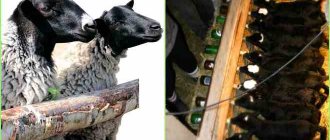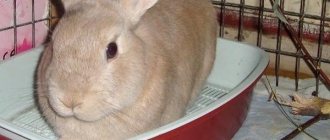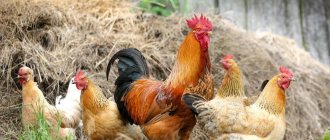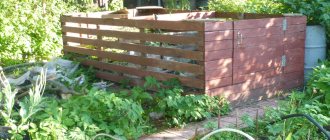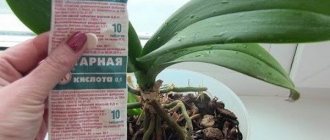Before placing eggs in the incubator, it is very important to know whether they are fertilized and how the embryo is developing. A special device – an ovoscope – will help control this process. Making it with your own hands is as easy as shelling pears, you just need to put in a little effort. There are several ways to make such a device. In any case, you will only spend a few minutes making it, so choose the most suitable option.
What is an ovoscope and what is its principle of operation?
This device is used in cooking to determine the freshness of a product, but more often in farming to determine fertility. That is, using this device you can check the quality of eggs.
The operating principle of the ovoscope is quite simple. It is based on illuminating the egg with an ordinary lamp. Therefore, you can easily make an ovoscope with your own hands in 5 minutes. The eggs are placed in small depressions on the body. And inside the device there is a lamp.
Usually, ready-made ovoscopes operate on mains power and are designed to scan about a dozen eggs. Although there are also larger specimens, allowing one to determine the quality of more than twenty pieces. There are also miniature devices that can illuminate just one egg at a time. Depending on the model, the device will differ noticeably in weight and dimensions. It is quite possible to make both copies at home.
Types of ovoscopes
There are three types of devices, which differ in appearance and location of the light source.
Horizontal
The lamp is located at the bottom. There is a hole in the wall of the body for eggs. Advantage of horizontal models: less heating of the shell. Disadvantages: fire hazard, the ability to check only one egg at a time.
Vertical
The hole for the egg is on the top. Several holes are drilled on the side for ventilation. The light source is an energy-saving lamp. Most often, vertical devices allow you to check from 4 to 10 eggs at once.
Hammer
The shape resembles a hammer. Manual ovoscope, illuminates one egg at a time. Operates on batteries or accumulator. The models use LED lamps that do not overheat the shell. Plus: there is no need to remove the egg from the tray.
Lamp selection
First of all, you should figure out what type of lamp is suitable before making an ovoscope to check eggs with your own hands.
Halogen light sources are often installed. But such devices must be used with caution, as they heat up very quickly. The continuous operating time of the ovoscope should be no more than five minutes. If you need to check another batch of eggs, turn off the device until it has completely cooled.
More modern devices have LED lamps. They have a number of advantages over halogen ones. The device can be used continuously for a longer period of time. Heating of eggs during candling is also eliminated, so their properties remain unchanged.
That is, if you want to make an ovoscope with your own hands, then it is better to take low-power lamps. And remember that the egg does not need to be overheated, otherwise you will simply damage the embryo.
How to use an ovoscope
The device is equally suitable for all types of eggs. The main requirement is that the shell must be dry, clean, without visible cracks, seals or chips. The first inspection is carried out before laying to identify unfertilized or defective eggs. The second viewing is done:
- For chicken eggs - after 7 days,
- For turkey and duck eggs - after 9 days,
- For geese eggs - after 10 days.
By this time, the embryos have already formed a circulatory system and have a heartbeat. The second candling is necessary to identify frozen embryos. The third time is checked with an ovoscope on days 12-14.
More frequent viewing can lead to pathologies in the development and death of embryos.
The simplest ovoscope
To make the most basic ovoscope, you will need materials that you most likely already have. This is a light bulb, a sheet of cardboard and scissors:
1. The contents of the egg will be best seen in clear light if you use a dark background as a limiter. Therefore, it is recommended to use black cardboard. In the center of the sheet, use scissors to cut an oval, which will be slightly smaller in size than the egg.
2. Go to the light source (chandelier, sconce or table lamp). Stand about thirty centimeters away from him.
3. Hold the prepared sheet of cardboard as a partition, and with the other hand, bring the egg to the hole.
The simplest ovoscope (it’s easy to make with your own hands) is ready. Now it can be used for its intended purpose.
How to check eggs with an ovoscope?
You should not perform candling every day, otherwise you can destroy the embryo. It is best to do this twice a week. You must first wash your hands and put on sterile latex gloves to prevent bacteria from entering the egg.
How to check? This is not difficult to do. The egg is placed over the hole, and then the lamp is turned on and the embryo is examined from all sides. Transillumination is performed for no more than 5 minutes, preferably 1-3. You need to put the best eggs in the incubator. Units with:
- uniform shell structure;
- blurred boundaries of the yolk;
- clear boundaries of the air cushion;
- slow movement of the yolk during rotation;
- absence of foreign inclusions.
If they meet these parameters, then healthy offspring of birds will be hatched from the incubator. You should not check freshly laid eggs, as this is pointless. The first procedure should be carried out only on day 5, when an air cushion appears, the yolk thickens somewhat and it becomes clear whether the egg can be used for incubation or not.
Paper ovoscope
For this method of making an ovoscope, you will need a sheet of paper, glue or tape, scissors, and a light source (for example, a table lamp or flashlight).
1. Roll a sheet of paper into a tube so that one end is about six millimeters smaller than the average egg. The other edge should correspond in diameter to the light part of the lamp. That is, we will apply one side of the bag to the lamp, and an egg should be applied to the other edge.
2. Secure the ends of the tube with tape or glue so that they do not unwind.
3. For more convenient use, cut the bag so that its length is approximately nine centimeters.
4. Ovoscope for eggs (it’s easy to make it yourself) is ready! If desired, you can connect the flashlight and the corresponding tip of the tube using tape.
Why is ovoscopy necessary?
The procedure helps to determine at an early stage whether the egg is suitable for incubation or not. This will allow you to immediately reject unfertilized and bad units with defects and place high-quality ones in the incubator, which will produce healthy chickens.
If you place all the eggs in an incubator indiscriminately, then most of them may have defects. After all, a farmer cannot distinguish by eye which units are not suitable for breeding poultry.
During the incubation of the egg, a check is also performed using an ovoscope; for example, on the 6th day, the presence of an embryo can be checked. Then you can monitor its development. The temperature in the incubator is adjusted as needed. An ovoscope will help identify high-quality material for incubating chickens, ducks, geese, quails and other birds.
What can be used to make a more convenient option?
If you want to raise chickens regularly in a home incubator, then you will use the ovoscope almost constantly. Then it makes sense to make a more convenient and reliable device for candling eggs. You can also make it from scrap materials that you can find at home.
So, what will you need? The main components of a homemade ovoscope are a low-power light bulb up to one hundred watts, an electrical cord (with a switch if desired) and a body made of fire-resistant material. Even a girl can make an ovoscope with her own hands from such a minimal set.
1. First decide what you will make the base from. For example, it could be a tin can or a wooden box. The most optimal size is considered to be approximately thirty centimeters. But you can make the base larger or smaller depending on your needs. The main thing is that the light bulb fits there.
2. Cut a small hole at the bottom of the box.
3. Insert the socket with the light bulb into it so that the cord with the plug comes out. Secure with tape or glue if necessary. The light bulb should not fall off.
4. Make an oval hole in the lid of the box. It should be about half a centimeter smaller than the egg, otherwise it will fall down.
5. Place the finished device on the table and plug it into the network. If everything was done correctly, the light will light up.
This is a pretty good way to make a reliable ovoscope with your own hands in 5 minutes.
DIY ovoscope
You can make the device in several ways, but regardless of the option, the home device can only work with one egg. This disadvantage is compensated by its compactness and simplicity, as well as by the fact that the device can be stored even when disassembled.
From a tin can
This model is the easiest to make, and what’s important is that it doesn’t require any special skills or materials. You need to take an empty and clean metal tin can with a shiny inner surface and an incandescent lamp with a power of up to 100 W. A hole for the base is cut out in the bottom, and the light bulb itself is placed inside. A recess is made in the lid of the jar to suit the size of the egg. The finished device is installed on any flat surface.
From a flashlight
This homemade ovoscope is made from a regular LED flashlight. As an adapter, a rubber gasket is used, the diameter of which is equal to the size of the egg. The flashlight is attached to a plastic handle or a small wooden holder using a screw and a piece of wire.
From a cardboard box
To make an ovoscope, you need to have a box made of durable cardboard and an 80-90 W lamp. Place the box on a flat surface and cut several holes in the side wall. A lamp is placed inside the box, and eggs are inserted into the holes. The size of the holes should be slightly smaller than the diameter of the eggs. The disadvantage of this model is its short period of operation. The cardboard heats up quickly from the lamp, which can lead to a fire. Plus: speed of assembly.
Made of metal
A more durable and durable variation of a homemade ovoscope. It is made from a sheet of tin, 0.5 mm thick. The metal is given a cylindrical shape, 30 cm high and 13 cm in cross section. The edges are connected using rivets. Next, take a sheet of plywood 1 cm thick and cut out a circle with a diameter of 13 cm. A hole is drilled in the center necessary to secure the lamp socket. The plywood base is inserted into the cylinder. At the height of the light bulb, a window about 6*6 cm in size is cut out in the wall. A square shape for this window is cut out of the remaining tin, and frames of different sizes for eggs are cut out of pieces of plywood.
From a section of water pipe
A plastic plumbing adapter from 100 to 50 is required for the manufacture. A light bulb screwed into the socket is placed inside. The lower part is closed with a plastic plug with a hole in the center through which the electrical wire from the cartridge will pass.
From a can of chips
To make an ovoscope, you will need:
- A plastic glass or small sour cream jar,
- Chips can
- Energy saving light bulb,
- Electric wire,
- Cartridge.
The top of the plastic jar is cut off by 1.5 mm. A hole equal to the diameter of the cartridge is cut in the bottom. Using an awl or thin nail, a small hole is punched in the bottom of the main jar. An electrical wire is inserted inside. The light bulb is screwed into the socket, and everything is attached to the wire. The resulting lamp is inserted into a container of chips. Next, the homemade ovoscope is placed on a flat surface, and the lid of the jar is sealed with foil on both sides. A small hole is cut out in it, on which the egg is placed for translucence. Detailed photos of the assembly can be found on various thematic forums.
Tips for using an ovoscope
The ovoscope allows you to detect not only external, but also internal defects. However, it is worth considering that the eggs being tested must be fairly clean. This will make it easier to identify damage.
Depending on the incubation time, different contents can be seen using an ovoscope. In the early stages it will be the yolk and the air chamber, then - the blood vessels, and at the very end - the already formed chick. If they are damaged, the device will show this when examined.
The air chamber looks like a dark, round spot and is in a fixed position, so it shouldn't move when you turn the egg. The yolk can move, but should not touch the walls of the shell. When examined, cracks in the egg appear as dark stripes or spots.
Now you know how to make an ovoscope with your own hands in just a few minutes. It is very easy and simple, and most importantly, it helps save your budget.
Description of the ovoscope
The literal translation of the word “ovoscope” from Latin means “to examine an egg.” This device allows you to illuminate an egg using a powerful lamp to identify the embryo inside, and is suitable for placing in an incubator. With its help it is very convenient to identify hidden defects that affect the development of the embryo. These include:
- Heterogeneity of the shell,
- Air chamber displacement,
- Reddish color of the interior,
- Free movement of the yolk
- Immobility of the yolk
- Blood clots
- Presence of foreign inclusions.
All ovoscopes consist of a body, a lamp, a tray, and a switch. Homemade or purchased, they work on the same principle: the egg is placed in the holder, the light is turned on.
How to make a homemade ovoscope
Many thrifty poultry farmers do not buy ovoscopes, but make them with their own hands. You can use even the simplest model for this.
- To make it, you will need a light bulb with a power of up to 100 watts, and a housing with a hole.
- The body is made of galvanized or other fire-resistant material.
- The hole should be such that the egg does not fall inside.
- A light bulb with a cord outlet and a plug placed inside the housing will provide good illumination for an egg placed in the hole.
- The device is placed on the table and plugged in, and the egg is placed in the hole.
Another option for a more complex variation of the ovoscope involves the following operating procedure:
- bend a cylinder of tin, rivet the ends,
- cut a circle from plywood with the same diameter as the cylinder,
- pass the electrical wire through the plywood circle and screw in the socket, place the circle in the cylinder,
- screw in the lamp and cut a window in the cylinder for it,
- cut a square shape from the tin that will fit into the window cut out in the cylinder,
- cut out squares from plywood with holes of different sizes for eggs.
Instead of tin, any dense case will do, for example, a wooden box up to 10 cm high.
- LEDs are installed at one end.
- The upper end is wrapped with soft material to prevent damage to the shell.
- Holes are made at the bottom of the box for the eggs and also lined with soft material.
- The LEDs are connected to a 12 Volt power source, after which the device can be used.
If you have a large farm, a homemade ovoscope will not be entirely convenient. A large selection of such factory-made devices will allow you to inspect eggs faster and with better quality.
Tips and tricks for using the device
With the help of an ovoscope it is possible to examine both external and internal imperfections and defects. But when working with an ovoscope you should consider:
- The shell must be clean so that the examination process is not difficult and the result is truthful.
- The ovoscope shows cracks as dark spots and stripes, the air chamber should be static, and the yolk can move, but not touch the walls from the inside.
- It is advisable to avoid using halogen bulbs due to their tendency to heat up. Overheating of the shell is unacceptable. It can lead to undesirable consequences. If you cannot find another light source, use the halogen lamp for no more than five minutes, then turn it off and let it cool completely.
- It is recommended to use a light bulb with a power of at least 100 W.
- The result will be more effective if you use additional reflective material.
What defects can be identified at each stage
When checking the material at various stages, the following defects can be identified:
- At the first stage, it is possible to determine the presence of damage to the shell, as well as a violation of egg storage (indicated by the placement of an air chamber on the side wall), and the presence of foreign inclusions in it. Also at this moment, damage to the yolk or its rupture can be detected (in this case, the yolk will not be visualized). In addition, at the first stage, the presence of two yolks can be detected, due to which the egg can be rejected (this number of yolks is considered an anomaly).
- At the second stage, it is possible to determine the death of the embryo, the discrepancy between its development and the shelf life of the material in the incubator. The developmental pathology of the embryo is indicated by its close location to the shell, the uneven border of the circulatory system (indicates a developmental delay of the fetus), the absence of vessels in the sharp side of the shell, and the pale color of the translucent mass.
- At the third stage, it is also possible to record embryos frozen in development and abnormal development of chicks. This is indicated by the small size of the embryo, the large mass of protein that is not involved in its formation, as well as the poor development of the vascular network, which not only does not close, but does not even reach the sharp end of the shell.
- At the fourth stage, developmental pathologies are determined, due to which the chick may not hatch from the egg. They are indicated by the small size of the air chamber, as well as the absence of vessels at the sharp end of the shell. Such embryos usually do not survive.
If defects are detected in eggs, they must be immediately discarded. It is not recommended to store such material in an incubator in the future.
Why is an ovoscope needed?
By illuminating the egg through and through, the device allows you to determine its quality and is used throughout the entire incubation period, tracking the progress of the development of the embryo.
Incubation “blind” brings few results. The number of chicks you hatch will directly depend on the quality of egg selection. An ovoscope for eggs will help solve this problem.
How to do it yourself
If you do not have the opportunity to purchase a ready-made device, you can make an ovoscope at home using inexpensive improvised materials. To do this, you will need to take a box made of thick cardboard, place a 60-watt light bulb in it, connected to the network using a plug, and cut a hole on the lid slightly smaller than the diameter of the egg. If you want the device to serve you for a long time, you should sheathe the inside of the box with galvanization. This will protect it from overheating. This link will tell you how long a chicken hatches eggs.
It is better to use such an ovoscope in a dark room. This will allow you to obtain more accurate research results at all stages of ovoscopy.

